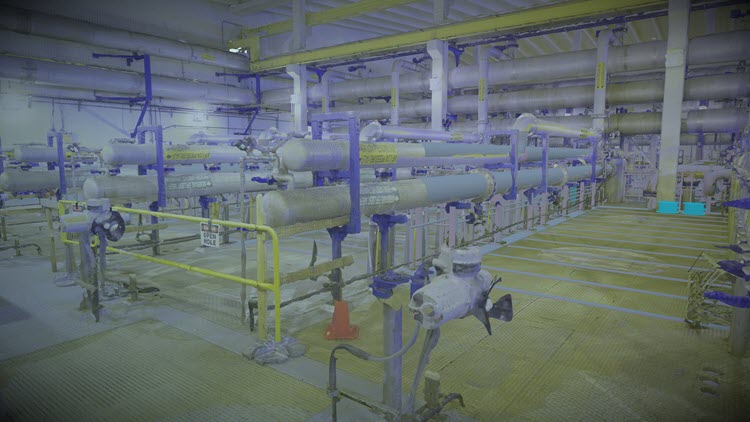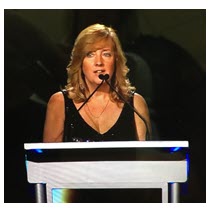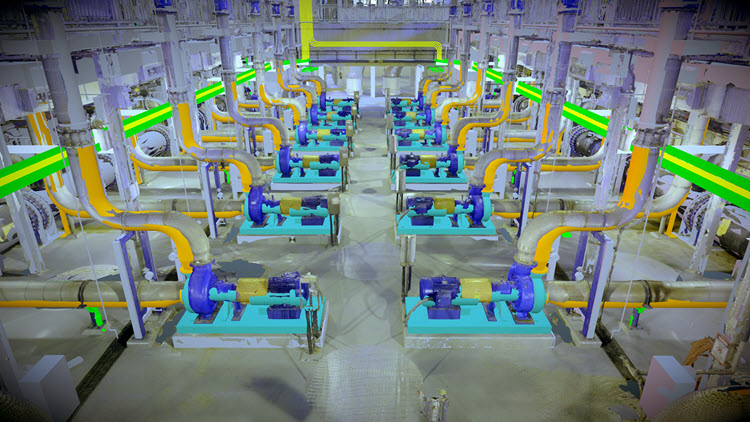
Further Improving Advanced Wastewater Treatment Methods
Gwinnett County, northeast of Atlanta, has a population of 950,000. The Gwinnett County Department of Water Resources (GCDWR) provides wastewater treatment services to these residents via the F. Wayne Hill Water Resources Center. Originally constructed in 2000, it utilizes advanced ozone, granular activated carbon, and membrane treatment processes to return high-quality effluent to the Chattahoochee River and Lake Lanier while going beyond regular water quality requirements. Since it began operations, the facility has received a number of awards from water associations, including the Platinum 18 Peak Performance Award from the National Association of Clean Water, and has never received a water quality violation.
Despite the relatively young age of the treatment plant, Gwinnett County has experienced the second-fastest population growth in Georgia at 19.18% from 2010 to 2022. Even with a maximum flow of 60 million gallons per day, the plant frequently experienced flow issues that would need to be addressed to keep the effluent flow constant for the increasing number of residents. In addition to fixing existing flow issues, GCDWR wanted to improve the capacity of the membrane treatment process. The organization tasked Jacobs Engineering with designing a renovation to the plant that would address both needs. “This project will allow for the continued delivery of superior wastewater effluent to one of the most important lakes in the state of Georgia,” said Nathan Meade, design manager at Jacobs.
Squeezing New Equipment into Tight Spaces
The scope of the project includes various improvements at the Membrane Building and East Chemical Building. For the Membrane Building, Jacobs is designing and building additional membrane cassettes, permeate, and back pulse pumps and piping, high-capacity drum screens, HVAC equipment, and electrical and variable frequency drive equipment. The East Chemical Building improvements include chemical tanks, chemical pumps and piping, and an architectural canopy over a fill station. Both buildings would also receive various architectural and structural improvements.

The project posed numerous challenges to Jacobs. Since the new design and equipment would be incorporated into an older building, the design team needed to carefully build the new elements alongside existing features that could not be moved. “Since this was a retrofit project, it was essential for the design team to have a thorough understanding of existing space and equipment placement, particularly in the Membrane Building where space is limited,” Meade said. They had to tie into the building’s original piping, avoid or incorporate existing structural elements, and create complex spatial arrangements that would push the design accuracy to the limits. The team could not easily import older, limited 3D models created for the plant, and they could not visit the site due to the COVID-19 pandemic, preventing them from collecting specific information on building conditions. Jacobs needed an alternative method for the team to view and interact with as-built conditions of the site.
Visualizing the Impact of Design Work in a 3D Model
The design team determined that they could overcome the project’s challenges by using Bentley applications to create a federated digital model that included accurate data for both the existing conditions and the new equipment. First, they undertook a laser scan of the project areas and imported the point cloud data into ContextCapture, creating a reality model of the current site. Next, they used ProjectWise to establish a connected data environment for both the reality model and models of the new components. By providing current conditions and all project data to the design team and stakeholders, they could undertake modeling and design review in a central location without having to visit the job sites.
Within the reality mesh, the team visualized the combination of the legacy plant data, as-built conditions, and proposed improvements. Because the applications were open and interoperable, they were also able to incorporate older 3D models that had been created with AutoPLANT and update them with the current operational conditions of the facility. In the process, they updated the models to correct errors and build out architectural elements that were missing, ensuring they worked with a complete, accurate digital replica of the work site. Using OpenBuildings, OpenPlant, OpenRoads Designer, and other Bentley applications, they modeled new elements for the renovation. Since the federated model helped them immediately see how each aspect of the design would impact the piping, equipment, and structure of the existing facility, they could make adjustments to correct clashes.

Working Remotely to Improve Collaboration
By establishing both a connected data environment and a federated model, all project stakeholders were able to greatly improve communication and collaboration. The design team and stakeholders reviewed the model’s development during weekly calls, facilitating discussion of any project concerns and improving decision-making. “These team calls and screensharing
proved invaluable to the success of the project, and utilization of the new reality mesh produced real value-adding design decisions,” Meade said. In total, working in the federated model facilitated at least 20 major design decisions that would have required an additional 300 hours of modeling to resolve using older design methods.
Going digital during design also produced strong environmental benefits. As the reality mesh provided a detailed representation of every area and angle of the project, the team had little need to travel back to the work site, preventing carbon emissions from transportation. Additionally, adjustments to the design will improve the capacity to discharge reclaimed water to Lake Lanier, which will boost water levels at one of Georgia’s most popular recreational lakes. Due to the success of designing within the federated model and incorporating all asset information, Jacobs and the project owner now plan to use them to improve construction and operations.
Organization
Jacobs Engineering
Solution
Water and Wastewater Treatment Plants
Location
Buford, Georgia, United States
Project Objectives
- To improve the flow of reclaimed water at an advanced wastewater treatment plant.
- To incorporate new elements around existing assets within a tight space.
Products Used: AutoPLANT, ContextCapture, MicroStation, OpenBuildings, OpenPlant, OpenRoads Designer, Pointools, ProjectWise 365
Fast Facts
- The F. Wayne Hill Water Resources Center utilizes advanced ozone, granular activated carbon, and membrane treatment processes to go beyond regular water quality requirements associated with returning high quality effluent to Lake Lanier.
- Jacobs Engineering was tasked with designing a renovation to the plant that would improve flow and accommodate a growing population.
- The new elements had to tie into the building’s original piping, avoid or incorporate existing structural elements, and fit within a tight work footprint.
ROI
- Using Bentley applications to create both a connected data environment and a federated model greatly improved communication and collaboration among all stakeholders.
- The reality mesh provided a detailed representation of every area and angle of the project, eliminating the need to travel to the worksite.
- Working in the federated model facilitated at least 20 major design decisions that would have required an additional 300 hours of modeling to resolve using older design methods.
“The collaboration between the design team and Bentley to drive the use of a high-quality reality mesh resulted in many design decision improvements through the life of the project. Continuous positive feedback from the client further validated the ambitious decision to capture the original laser scan of the highly complex facility.” – Nathan Meade, Design Manager, Jacobs Engineering
Guest post by Bentley Systems: Customer Success Story


Author: Sandra DiMatteo is Director, Industry Marketing, Water with Bentley Systems. She can be reached at sandra.dimatteo@bentley.com.
Sandra DiMatteo is the Industry Marketing Director, Water Infrastructure at Bentley Systems. She has more than 25 years of experience in reliability and asset performance management software, asset lifecycle information management, and is an expert in digital twin cloud solutions in the water and wastewater, energy and process industries. Sandra holds an honors degree in accounting and is a Certified Reliability Leader. She sits on the Reliability Leadership Institute Board of Advisors and founded the Ontario Chapter of the Society of Maintenance and Reliability Professionals.




